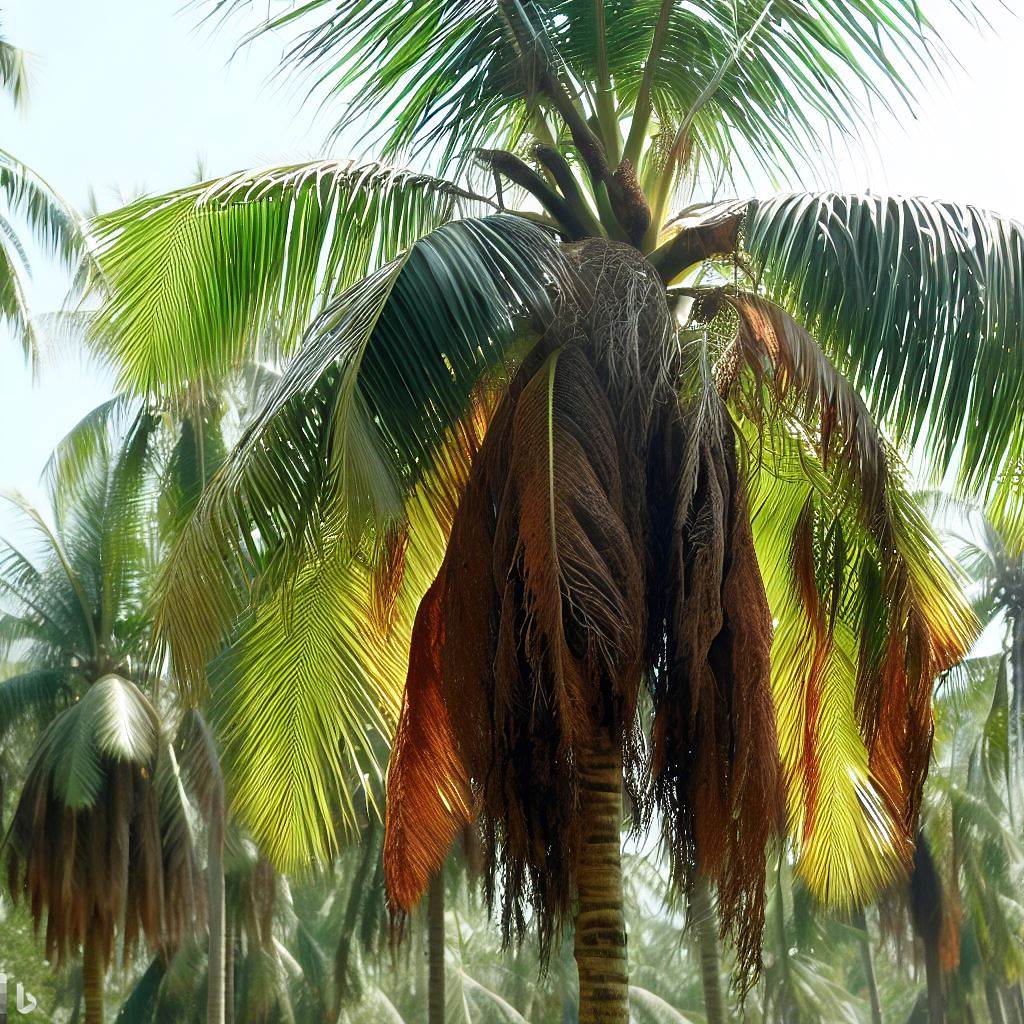
Coconut trees are not only known for their beauty and tropical vibes but also for their economic importance in many regions. However, just like any other plant, coconut trees can be susceptible to various diseases that can hinder their growth and productivity. As a farmer, it is crucial to have a comprehensive understanding of coconut tree diseases and how to combat them effectively. In this guide, we will explore the common diseases that affect coconut trees, their symptoms, causes, preventive measures, treatment options, best practices for maintenance, and resources for diagnosing and treating these diseases.
Common Coconut Tree Diseases
Coconut trees can be affected by a range of diseases, some of which are more prevalent than others. One of the most common diseases is coconut leaf blight, caused by the fungus Pestalotiopsis palmarum. This disease is characterized by brown lesions on the leaves, leading to defoliation and reduced photosynthesis. Another common disease is lethal yellowing, a phytoplasma infection that causes wilting, yellowing, and eventual death of the tree. Other notable diseases include bud rot, root rot, and stem bleeding, each caused by different pathogens.
Symptoms and Identification of Coconut Tree Diseases
To effectively combat coconut tree diseases, it is essential to be able to identify the symptoms associated with each disease. Coconut leaf blight, for example, presents as irregular brown lesions on the leaves, which may spread to the entire canopy if left untreated. Lethal yellowing, on the other hand, is characterized by yellowing and wilting of the fronds, starting from the lower leaves and progressing upwards. Bud rot can be identified by the rotting and discoloration of the central bud, leading to the collapse of the crown. Root rot often presents as discolored and decaying roots, while stem bleeding is marked by the oozing of reddish-brown sap from the trunk.
Causes and Factors Contributing to Coconut Tree Diseases
Coconut tree diseases can be caused by a combination of factors, including pathogens, environmental conditions, and cultural practices. Fungal pathogens, such as Pestalotiopsis palmarum and Phytophthora palmivora, are responsible for many diseases affecting coconut trees. These pathogens can be introduced through infected planting materials or through wounds in the tree caused by pests or mechanical damage. Environmental factors such as high humidity, excessive rainfall, and poor drainage can create favorable conditions for disease development. Additionally, improper cultural practices, such as over-watering, inadequate fertilization, and lack of sanitation, can weaken coconut trees and make them more susceptible to diseases.
Preventive Measures for Coconut Tree Diseases
Prevention is always better than cure when it comes to coconut tree diseases. By implementing proper preventive measures, farmers can significantly reduce the incidence and severity of diseases. One crucial step is to use disease-free planting materials from reputable sources. Regular inspection of the trees for signs of disease and timely removal of infected fronds and debris can prevent the spread of pathogens. Maintaining proper cultural practices such as balanced fertilization, adequate irrigation, and proper drainage can help keep coconut trees healthy and resilient. It is also important to promote good hygiene in the plantation by regularly disinfecting tools and equipment to prevent the spread of pathogens.
Organic Methods to Treat Coconut Tree Diseases
In cases where preventive measures are not sufficient, organic methods can be employed to treat coconut tree diseases. One effective approach is the use of biological control agents, such as beneficial fungi and bacteria, which can help suppress disease-causing pathogens. Another organic method is the application of natural extracts with antimicrobial properties, such as neem oil, garlic extract, and copper-based sprays. These natural substances can inhibit the growth of pathogens and reduce disease severity. Additionally, cultural practices such as pruning infected parts, improving soil health through organic amendments, and maintaining proper nutrition can help boost the tree’s immune system and aid in disease recovery.
Chemical Treatments for Coconut Tree Diseases
In some cases, chemical treatments may be necessary to control severe outbreaks of coconut tree diseases. Fungicides are commonly used to combat fungal diseases, while bactericides are employed for bacterial infections. It is crucial to choose the right chemical and follow the recommended dosage and application instructions to ensure effectiveness and minimize negative impacts on the environment. However, it is important to note that chemical treatments should be used as a last resort and in accordance with local regulations to prevent the development of resistance and minimize harm to beneficial organisms.
Best Practices for Maintaining Healthy Coconut Trees
Maintaining healthy coconut trees is key to preventing and managing diseases effectively. Regular inspection of the plantation for signs of diseases and pests can help identify issues early on. Pruning should be done regularly to remove dead or diseased fronds, allowing for better air circulation and reducing the risk of infection. Proper irrigation and drainage are essential to prevent waterlogged conditions that can promote disease development. Balanced fertilization, based on soil tests and nutrient requirements, ensures that the trees have the necessary nutrients for optimal growth and disease resistance. Lastly, maintaining good sanitation practices, such as removing fallen fruits and debris, can help reduce the presence of disease-causing pathogens in the plantation.
Resources and Tools for Diagnosing and Treating Coconut Tree Diseases
When dealing with coconut tree diseases, it is crucial to have access to reliable resources and tools for diagnosis and treatment. Local agricultural extension services and research institutions often provide valuable information on common diseases and their management. Online platforms and forums dedicated to coconut farming can also serve as a valuable source of knowledge and support from experienced farmers and experts. Additionally, diagnostic tools such as disease testing kits and laboratory services can be utilized to accurately identify the pathogens causing the diseases and guide appropriate treatment measures. By staying informed and utilizing available resources, farmers can effectively combat coconut tree diseases and protect their investments.
Conclusion and Key Takeaways
Coconut tree diseases can pose significant challenges to farmers, but with the right knowledge and strategies, they can be effectively managed. By understanding the common diseases, their symptoms, causes, and preventive measures, farmers can take proactive steps to protect their coconut trees. Implementing organic methods and cultural practices can help control diseases without relying solely on chemical treatments. Regular monitoring, pruning, and maintenance of healthy trees are essential for long-term disease management. Access to resources and tools for diagnosis and treatment is invaluable in ensuring accurate and effective disease management. By combining these strategies and practices, farmers can combat coconut tree diseases and maintain healthy, productive plantations.







